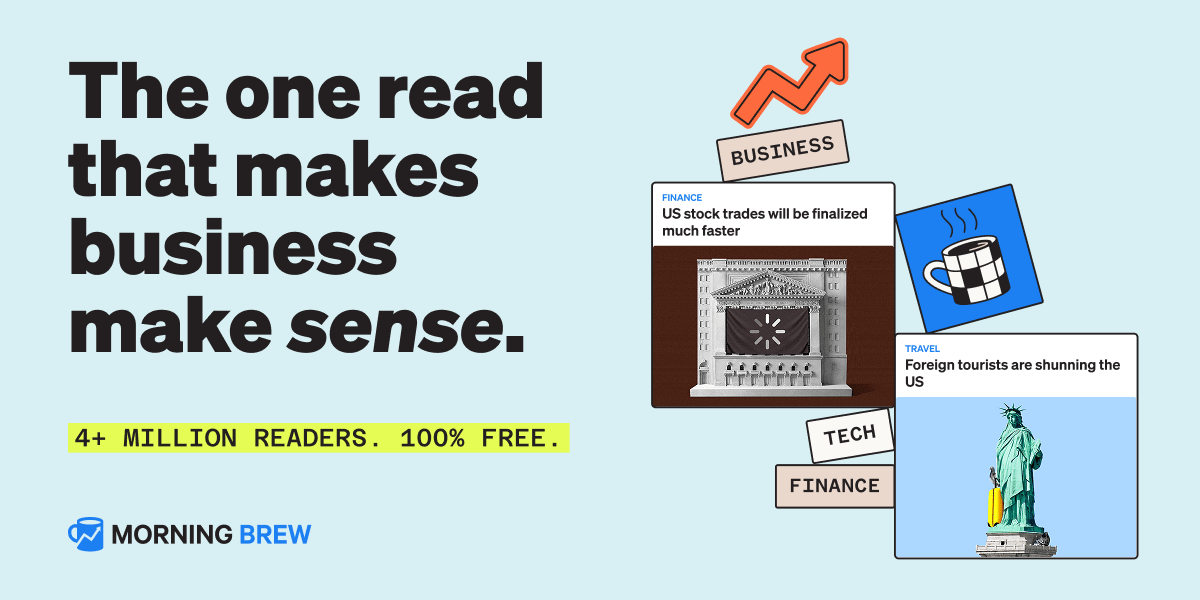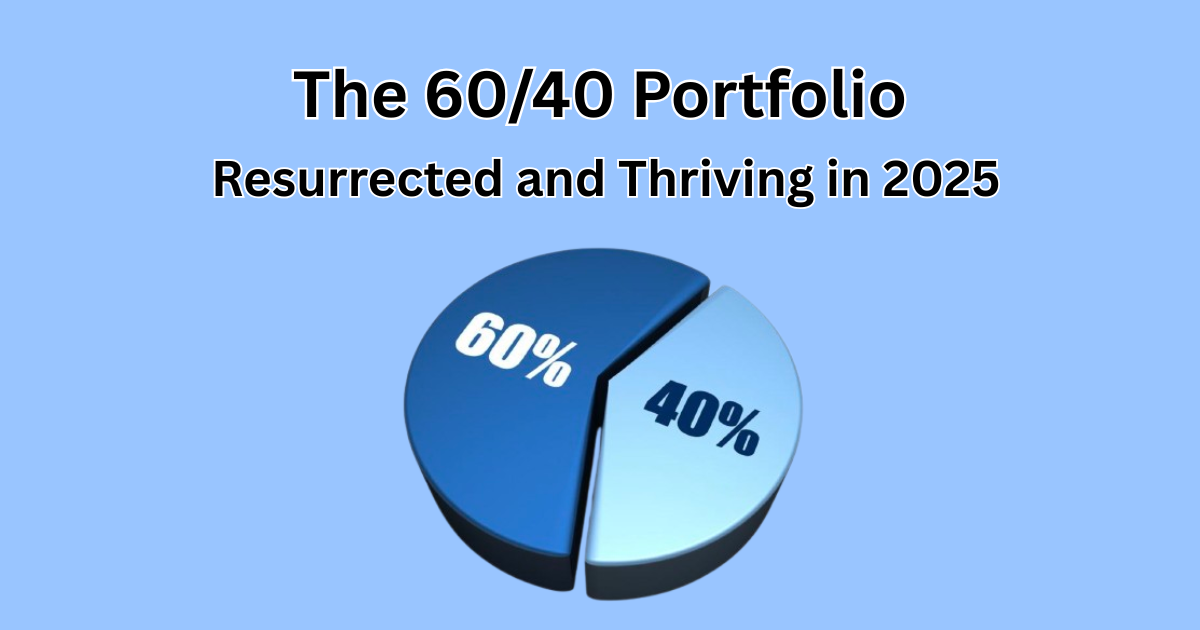

Welcome to The Profit Zone 👋
Where thousands of millionaires, CEO’s and high-performing entrepreneurs read the #1 financial newsletter on the web.


👉 How To Preserve Wealth in an Overheated Market: What You Need To Watch Out For 🥵
👉 Rebalancing Your Portfolio for Wealth Preservation: How To Do It The Right Way ✅
👉 Learn How To Value Stocks: Everyone Knows The Price, Not Everyone Knows The Value 💰


“You don’t have to be brilliant, only a little bit wiser than the other guys, on average, for a long, long time.”

Trusted by millions. Actually enjoyed by them too.
Most business news feels like homework. Morning Brew feels like a cheat sheet. Quick hits on business, tech, and finance—sharp enough to make sense, snappy enough to make you smile.
Try the newsletter for free and see why it’s the go-to for over 4 million professionals every morning.


How To Preserve Wealth in an Overheated Market
Welcome to this weeks edition of The Profit Zone.
As I write this, the S&P 500 is up almost 13% YTD, however that price action doesn’t tell the full story.
Beneath the surface lies a critical reality: the market is overvalued by historical standards.
Today, we’ll be unpacking how to invest during bull markets, key pitfalls to avoid, effective strategies and ways to preserve your wealth if the tide turns.
Why the Market is Overvalued
Before we get into why the market is overvalued, I think the below chart is important.
As you can see, U.S. shares have steadily increased since 1900, however if you look closely, you’ll realize that there’s ALWAYS a reason to sell.
Whether that be because of war, recessions, or pandemics, the journey to this point has been a bumpy one, but it all looks smoother once you zoom out.
The Shiller CAPE ratio, also known as the cyclically adjusted price-to-earnings ratio, is a stock market valuation tool that compares the current stock price to the average inflation-adjusted earnings from the last 10 years.
As of today, we sit on the high range as far as CAPE ratios go.
The below chart may seem confusing, but the one thing you should take from it is that the market is heading in a direction not seen since the dot com crash of 2000, when the CAPE ratio rose above 45.
The S&P 500's CAPE ratio stands at approximately 39.5 as I write this, higher than whats shown on the chart above and significantly higher than the 10 year average of 17 and 20 year average of 28.
This overvaluation stems from several important factors.
1) The post-pandemic recovery which was fueled by massive fiscal stimulus and low interest rates, which propelled tech-heavy indices to all time highs.
2) AI enthusiasm which has driven valuations in sectors like semiconductors and software sky high, reminding us of the dot com bubble.
3) Persistent inflation and rate cuts that came “slower than expected” by the Fed have also kept multiples elevated, as investors continue to chase growth in a low-yield environment.
The Buffett Indicator, which measures market cap to GDP, is also in dangerous territory signalling broad overpricing as of June 30, 2025.
While bull market like these can continue, these levels historically precede lower future returns that are often in the single digits or even negative.
How to Invest During Bull Markets
In a bull market, the key is to participate without overexposing yourself.
How do you do this? Simple.
Focus on companies with strong balance sheets, consistent earnings growth and competitive moats.
Sectors like technology and in some ways, healthcare, have led that charge, but its important to be diversifying across other sectors and types of assets, which may offer better entry points during this growth frenzy.
Strategies to employ include:
Dollar-cost averaging (DCA): Invest fixed amounts regularly to mitigate timing risks.
Momentum investing: Ride winners but set trailing stops to lock in gains.
ETFs in emerging trends: Renewable energy or cybersecurity, but limit them to 10-15% of your portfolio to avoid concentration risk.
Diversifying with Gold: I wrote a post on this that you can read here.
What to Watch Out For
Bull markets have a tendency to breed complacency.
It’s important to beware of market euphoria, where FOMO drives irrational buying and even selling.
Watch out for signs of a bubble, which can typically be identified through excessive speculation in meme stocks, IPOs that are skyrocketing or unprofitable companies trading at astronomical multiples, which we’ve seen time and time again.
Economic indicators like rising unemployment or inverted yield curves could also signal a downturn.
Preserving Wealth If the Market Falls
To gain a margin of safety, its important to think carefully about how your portfolio is allocated.
Maintaining 5-10% in cash for opportunistic buying during dips is not a bad idea and should be considered during markets like these.
You can also consider allocating capital to bonds which act as an income buffer.
Finally, diversifying with gold or real estate could be a good hedge against inflation.
Rebalancing Your Portfolio for Wealth Preservation
Rebalancing is crucial for maintaining risk levels.
Set a target allocation based on your age and risk tolerance.
Wealth Preservation Portfolio: aim for 50-60% stocks, 30-40% bonds, and 10% alternatives.
Review quarterly: If stocks rise to 70% due to the bull run, sell some to buy bonds, restoring balance.
This helps you sell high and buy low, as bonds typically have a negative correlation to the stock market.
For example:
Asset Class | Target Allocation | Current (Overvalued Bull) | Action |
|---|---|---|---|
Stocks | 60% | 75% | Sell 15% |
Bonds | 30% | 20% | Buy 10% |
Cash/Alternatives | 10% | 5% | Buy 5% |
This strategy prevents emotional decisions and ensures you're positioned for downturns.
Remember, the best investors prepare for rain during sunshine.




Did you enjoy this newsletter?


Want To Learn How To Value Stocks?
Understanding the true intrinsic value of a company can be a difficult task.
As they say, everyone knows the price, but not everyone knows the value.
This is where The Profit Zone Premium comes in.
We take investing to a whole new level, showing you what you should be looking at, what ratios are important and the entire process of how to value a stock based on its current and future projections.
We do deep dives and show you exactly what the stock is worth TODAY and what is an acceptable buy price.
Here’s a little sneak peak of our last deep dive on SoundHound AI $SOUN ( ▼ 0.81% )
Don’t miss the next one.
Join our community of investors all looking to build wealth and use the stock market to retire their salaries forever.
FYI: our 5 stock premium portfolio is up 61.8% YTD.

Disclaimer: The publisher does not guarantee the accuracy or completeness of the information provided in this page. All statements and expressions herein are the sole opinion of the author or paid advertiser.
Dividend Domination Inc. is a publisher of financial information, not an investment advisor. We do not provide personalized or individualized investment advice or information that is tailored to the needs of any particular recipient.
THE INFORMATION CONTAINED ON THIS WEBSITE IS NOT AND SHOULD NOT BE CONSTRUED AS INVESTMENT ADVICE, AND DOES NOT PURPORT TO BE AND DOES NOT EXPRESS ANY OPINION AS TO THE PRICE AT WHICH THE SECURITIES OF ANY COMPANY MAY TRADE AT ANY TIME. THE INFORMATION AND OPINIONS PROVIDED HEREIN SHOULD NOT BE TAKEN AS SPECIFIC ADVICE ON THE MERITS OF ANY INVESTMENT DECISION. INVESTORS SHOULD MAKE THEIR OWN INVESTIGATION AND DECISIONS REGARDING THE PROSPECTS OF ANY COMPANY DISCUSSED HEREIN BASED ON SUCH INVESTORS’ OWN REVIEW OF PUBLICLY AVAILABLE INFORMATION AND SHOULD NOT RELY ON THE INFORMATION CONTAINED HEREIN.
Any projections, market outlooks or estimates herein are forward-looking statements and are inherently unreliable. They are based upon certain assumptions and should not be construed to be indicative of the actual events that will occur. Other events that were not taken into account may occur and may significantly affect the returns or performance of the securities discussed herein. The information provided herein is based on matters as they exist as of the date of preparation and not as of any future date, and the publisher undertakes no obligation to correct, update or revise the information in this document or to otherwise provide any additional material.
The publisher, its affiliates, and clients of the publisher or its affiliates may currently have long or short positions in the securities of the companies mentioned herein or may have such a position in the future (and therefore may profit from fluctuations in the trading price of the securities). To the extent such persons do have such positions, there is no guarantee that such persons will maintain such positions.
Neither the publisher nor any of its affiliates accept any liability whatsoever for any direct or consequential loss howsoever arising, directly or indirectly, from any use of the information contained herein.
By using the Site or any affiliated social media account, you are indicating your consent and agreement to this disclaimer and our terms of use. Unauthorized reproduction of this newsletter or its contents by photocopy, facsimile or any other means is illegal and punishable by law.









